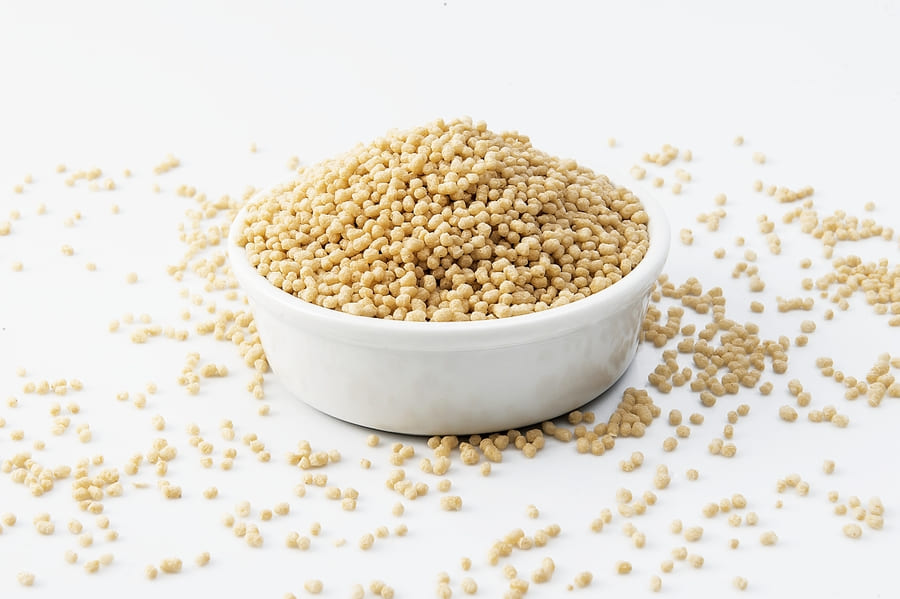
Quinoa, which is pronounced keenwah, has become a popular health food item, and with good cause. Although this little, nutrient-dense seed has been a mainstay of South American diets for thousands of years, it has only lately become known as a superfood on a global scale. Quinoa is an excellent supplement to any diet, regardless of your dietary preferences—healthy, vegan, or simply trying to vary your meals. This blog will discuss the many health advantages of quinoa, its ideal cooking method, its inventive applications, and why it’s regarded as one of the best plant-based protein sources.
Quinoa: What Is It?
Although it is more often thought of as a grain, quinoa is really the seed of the Chenopodium quinoa plant, which is related to beets and spinach. The Incas revered this crop, which originated in the Andes of South America, and referred to it as the “mother of all grains.”
Today, quinoa is available in various varieties:
White quinoa is the most popular kind, with a mild flavor and fluffy texture. Red quinoa is slightly earthier and maintains its shape better, making it ideal for salads. Black quinoa is nutty and crispy, providing a striking color contrast in meals. Tri-color quinoa combines white, red, and black quinoa for visual appeal.
Why Quinoa is a nutritional powerhouse.
Quinoa is frequently commended as a complete protein, meaning it includes all nine essential amino acids, which is uncommon in plant-based meals. Here’s a breakdown of the essential nutrients in 1 cup (185g) cooked quinoa: Calories: 222. Protein: 8 grams (higher than most grains) Fiber: 5g (improves digestion and gut health). Iron: 15% of the RDI (ideal for vegetarians). Magnesium: 30% of the recommended daily intake (supports muscle and nerve function) Manganese: 58% of the RDI (essential for metabolism and bone health). Phosphorus, zinc, folate, and B vitamins are all essential for energy and overall health. Quinoa is also gluten-free, making it a great option for people who have celiac disease or gluten intolerance.
Top Health Benefits of Quinoa
1. Excellent source of plant-based protein. Quinoa, a rare plant-based complete protein, contains all nine essential amino acids, making it popular among vegans, vegetarians, and athletes.
2. Promotes heart health. Quinoa contains heart-healthy lipids, fiber, and antioxidants such as quercetin and kaempferol, which assist to reduce inflammation and lower bad cholesterol (LDL).
3. Improves blood sugar control. Quinoa’s low glycemic index (GI) and high fiber content help regulate blood sugar levels, making it an excellent choice for diabetics.
4. Promotes Digestive Health Quinoa’s fiber promotes regularity and helps to maintain a healthy gut microbiota. 5. Helps with weight management. Quinoa, which is high in protein and fiber, keeps you satisfied for longer, avoiding excessive snacking and overeating.
6. Antioxidant-rich Quinoa includes flavonoids, which battle oxidative stress and may lessen the risk of chronic diseases such as cancer. How To Cook Quinoa Perfectly One typical complaint regarding quinoa is that it can become mushy or bitter if not cooked correctly.
Here are the nutrition facts about cooked quinoa (per 100g serving), including major nutrients and health benefits:
Quinoa Nutrition Facts (Cooked, per 100g) Calories: ~120 kcal.
Protein: approximately 4.1 g.
Contains approximately 1.9 g of fat and 0.2 g of saturated fat.
Carbohydrates: ~21.3 g. Sugars: ~0.9 g.
Fiber: ~2.8 g.
Iron: ~1.5 mg (15% RDI)
Magnesium: ~64 mg (16% RDI)
Manganese: approximately 0.6 mg (30% RDI)
Folate (B9): approximately 42 mcg (10% RDI)
Phosphorus: 152 mg (15% of the recommended daily intake)
Zinc: 1.1 mg (10% of the recommended daily intake)
Potassium: approximately 172 mg.
Note: Although raw quinoa has a higher nutrient value per gram, it is most commonly consumed cooked.
Follow these simple steps to get fluffy, tasty quinoa every time.
1. Rinse well. Quinoa contains a natural coating called saponin, which can be bitter. Rinse with cold water in a fine-mesh strainer for at least 30 seconds. 2. Use the correct water ratio. To add flavor to one cup of quinoa, use two cups of water or broth.
3. Cook like rice. Bring the quinoa and liquid to a boil. Reduce the heat to low, cover, and simmer for 15 minutes. Remove from heat and cover for 5 minutes to steam. Before serving, use a fork to fluff the mixture.
4. Add flavour boosters. Cook in vegetable or chicken broth rather than water. Toast the quinoa in a dry pan before cooking for a nuttier flavor. For added flavours, add herbs, lemon juice, or garlic.
Creative Quinoa Recipes
Quinoa is quite adaptable; here are some excellent ways to enjoy it other than as a side dish: 1. Quinoa Breakfast Bowl. To make a protein-packed breakfast, combine cooked quinoa, almond milk, cinnamon, fresh fruit, and a sprinkle of honey.
2. Quinoa Salad Combine chilled quinoa, cucumbers, cherry tomatoes, avocado, feta, and a lemon-olive oil dressing.
3. Quinoa Stuffed Peppers Fill bell peppers with quinoa, black beans, corn, and spices; bake until soft.
4. Quinoa Vegetable Burgers To make a hearty plant-based burger, mash quinoa with chickpeas, oats, and spices before pan-frying.
5. Quinoa porridge. Cook quinoa in coconut milk with vanilla and maple syrup to make a creamy, cozy dish.
6. Quinoa sushi rolls.
To make gluten-free sushi, substitute quinoa for rice. Potential drawbacks of quinoa
While quinoa is extremely nutritious, there are a few factors to consider:
Oxalates – Quinoa contains oxalates, which can lead to kidney stones in sensitive people. Saponins – If not properly washed, quinoa can have a bitter flavor and cause mild digestive pain. Caloric Density – While quinoa is nutritious, it is high in calories, thus portion control is essential if you are watching your diet. Fun Facts about Quinoa Quinoa’s high nutrient density has prompted NASA to explore it as a crop for long-term space missions. The United Nations designated 2013 as the “International Year of Quinoa” to highlight its global advantages. Quinoa leaves are edible and can be cooked like spinach!
